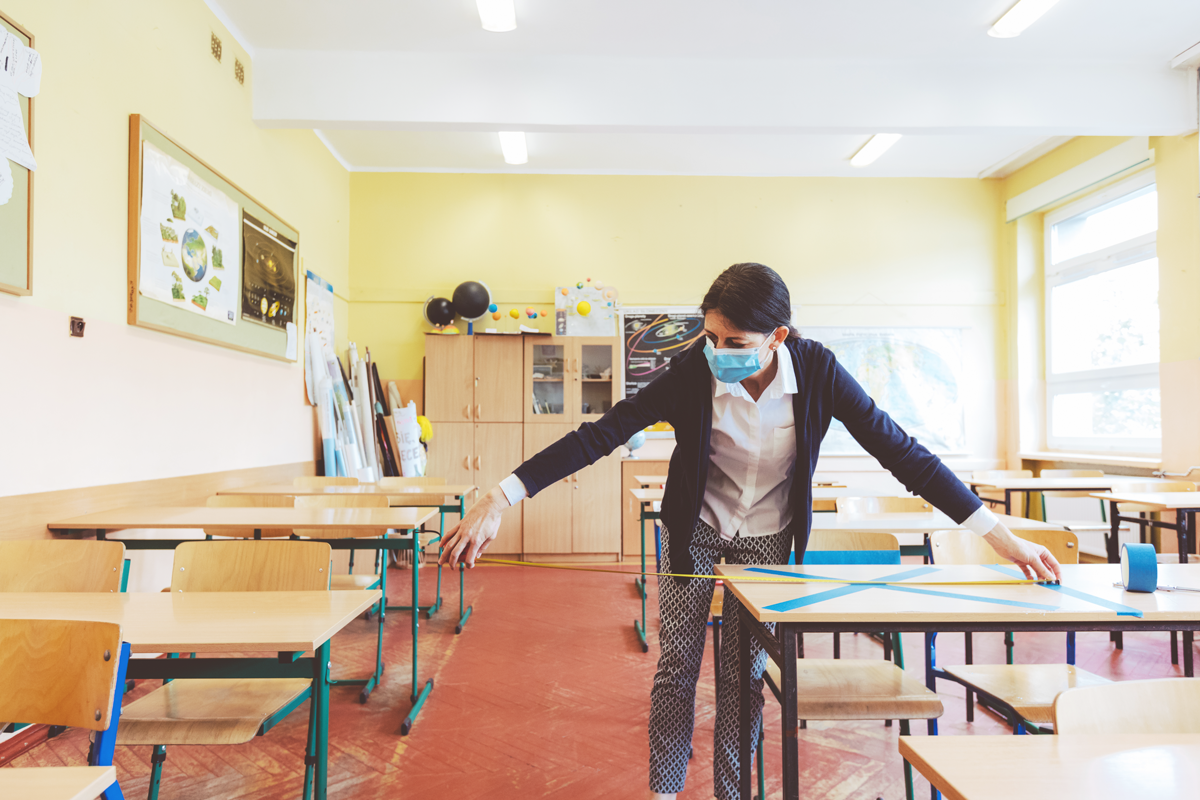The new guidance expands upon a framework CDPH introduced in its initial July 17 guidance on school reopening. The July 17 guidance permitted LEAs to resume on-campus instruction if located in a county that had not appeared on the monitoring list during the previous 14 days. That guidance also left room for a process in which LEAs in counties on the monitoring list could petition their local health officer for exemptions that would let them begin in-person instruction for elementary-age students. The Aug. 3 update (click here for a summary document) clarified how that process would work and established a fairly high bar to clear.
Waiver Application Process
- The new language strongly discourages school district and county offices of education from applying for the waiver if their home county has a case rate more than twice the threshold for placement on the county monitoring list (more than 0.2 percent).
- The language affirmed that elementary schools in counties on the monitoring list may not reopen without approval of a waiver request by the local health officer. The head of the relevant educational entity (district superintendent, charter school executive director, private school principal or head of school) may apply for the waiver.
- The waiver process only applies to grades TK-6, even if the waiver if requested for a school that has additional grades (e.g., TK-8 or K-12) and the waiver must be submitted at least 14 days prior to the planned reopening date.
- The applicant must “consult” with labor, parent and community organizations and publish a school reopening plan on the website of the LEA or charter school/private equivalent. Applicants must consult with all groups and post a reopening plan on the website before the waiver is filed because these steps have to be documented in the attested waiver application.
- The school reopening plan must address the following topics “in a manner consistent with guidance from CDPH and the local health department”:
- Cleaning and disinfection
- Small, stable cohorting
- Entrance, egress, and movement within the school
- Face coverings and other essential protective gear
- Health screenings for students and staff
- Healthy hygiene practices
- Identification and tracing of contacts
- Physical distancing
- Staff training and family education
- Testing of students and staff
- Triggers for switching to distance learning
Waiver Evaluation Process
The updated guidance establishes criteria that local health officers must reference when deciding whether to grant the waiver, including:
- Scientific evidence documenting both COVID-related risks for elementary-age students balanced against the health risks related to a lack of in-person instruction
- State law directing public schools to “offer in-person instruction to the greatest extent possible.” (Ed. Code § 43504)
- Whether elementary in-person instruction can be provided in small, stable cohorts
- Local health guidance, safety plans, availability of appropriate PPE, and availability of public health and school resources for COVID-19 investigation and response
- Current new case rate, testing percentage positivity trends, and the number and degree of indicators above thresholds for the county monitoring list
- Local hospitalization trends and hospital capacity
- Availability of testing resources within the community and via employee health plans
- The extent to which the applicant has consulted with staff, labor organizations, community and parent organizations
Athletics and Physical Education
The updated guidance places severe restrictions on physical education and athletic competition. Sports are permissible only if participants can keep six feet of physical distance between one another and if the participants come from a “stable cohort” such as a class. If these conditions cannot be met, sports should be limited to conditions and training as opposed to competitive activity. In all cases, the CDPH recommends that sports take place outside “to the extent practicable.”
More information on athletics and physical education is available on pages 13 and 14 of the updated guidance.
Conclusion
The updated guidance provides detail on the elementary school waiver process (grades TK-6 only ) as well as clarity on the extent to which sports and physical education can be conducted. For school districts and county offices of education in counties on the state monitoring list, the guidance establishes a high but achievable standard for school districts to meet before resuming in-person instruction. Careful coordination with stakeholders and local health officers weighs heavily in the waiver application process as does the overall status and recent trends of the county where major COVID-19 indicators are concerned.
CSBA continues to review the updated guidance and will provide further analysis in upcoming communications.




